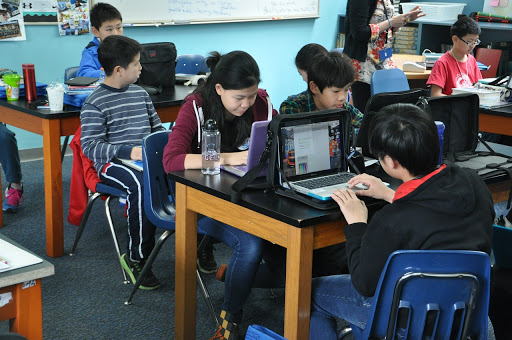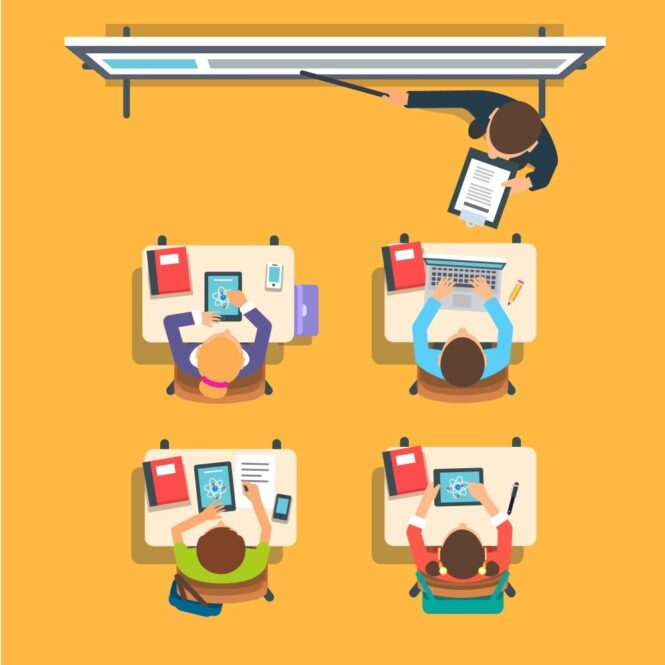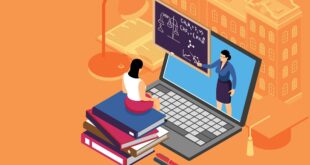The COVID-19 pandemic has disrupted all the industries and has changed the way humans work. People have to maintain social distance and wear a mask to protect themselves from getting infected with the virus. To ensure that social distancing is followed, many governments have put their countries in lockdown. A lot of schools and colleges have closed as online learning can support the education industry. This is the reason many universities, colleges, and schools have started adopting blended learning models.
Hybrid learning is the best of both worlds. It helps in keeping both the students and tutors safe by providing them tools to continue with the learning process. Teachers also get the opportunity to personalize learning for students that was impossible in a community-based setup. Hybrid or blended learning with Etutorworld is a good teaching alternative during this COVID time. In this article, we have consolidated some blended-learning techniques that will help institutions to keep the education process active.
Home-based learning

Homeschooling is a teaching technique in which parents or tutors teach their kids or students at home. Similar to school, a curriculum is set up that consists of course material, assignments, and other course completion requirements. There are a lot of benefits that homeschooling has:
- It provides flexibility for students to pursue their interests. The student has complete freedom from the choice of subjects to the time of studies. Moreover, they needn’t be locked in the house for studying. They can go out take a tour of the local museum or intern with a local business to get practical experience about the topic they are interested in.
- It teaches students how to self-study. If they don’t understand any concept, they can reach out to their parents or an expert. Thus, they get into the habit of exploring and researching topics they are struggling to understand. The development of these great study skills makes their college transition easy and seamless.
- Homeschooling also teaches students to socialize as they get a chance to interact with people of different ages, demographics, and experience. The more they socialize, the more confident and extroverted the students become. This is a critical life skill which will help them in the later stages of their life.
The rotation model

The rotational model of learning is a blend of traditional face-to-face learning and online learning. The schedule is fixed between these two processes and the classes are conducted as per the tutor’s discretion. The tutor defines the curriculum and assessment to meet the learning needs of every student. They address the behavior of all the students and customize the course structure accordingly. Some benefits of the rotation model are:
- The rotation model can be used for students of all ages in any academic subject. It provides a lot of flexibility to those which is needed in the current pandemic times.
- The students who are not from a well-to-do family background can take online classes as part of the rotation model and learn from the comfort of their home.
- It is a fluid teaching style that allows for course correction based on the learning path a student has chosen. The course material can be customized and personalized to meet the student’s academic needs.
- Since the course content is customized there is more student engagement and the they feel motivated to learn on their own as well.
Self-blend model

A self-blend teaching model is mostly preferred by students as it gives them full control to choose the topics they want to learn. They take online courses in addition to face-to-face learning to supplement their education. A lot of schools offer a self-blend model where the students get enough free time to complete the online courses they have chosen for learning. Some benefits of the self-blend model are:
- They get the opportunity to learn subjects and topics that are not taught in school. In their free time, they can complete the online courses they have picked as per their choice.
- The option of gaining extra knowledge motivates the students, and their focus on studies improves. This helps them to easily transition to college.
- Students also get the flexibility to complete the online courses whenever they are free and at their learning pace. There are no strict guidelines from the school’s end regarding the completion of online courses.
Online Lab School Model

In this teaching model, education takes place online through the computer lab and other labs present in the school or institute. The course material teaching is done remotely by the tutor. The benefits of this teaching model are:
- The students get the flexibility to learn as the classes are conducted through the digital domain.
- The institutes and schools that have limited resources benefit a lot by implementing the online lab school model.
- The students can learn at their own pace and don’t have to worry about completing the course within the strict timelines. The fast learners get to spend extra time in learning additional learning material by self-study.
Flipped classroom model

In the flipped classroom model, all the classes are taken by tutors through teleconferencing or video calls. In some courses, pre-recorded course material is also shared with students to watch in their study time. The online course videos are primary teaching tools, and the classes are reserved for discussions and doubt clearing sessions. The benefits of this teaching model are:
- The course material can be shared in form of videos, websites, images, text material, etc. Once the teacher has created a repository of these resources, the same can be used for future classes.
- The discussion sessions increase student engagement as they get to learn new problem-solving techniques that are showcased by their peers. Thus, the sessions become more productive, and students enjoy learning.
- Flexibility is another important benefit that gives enough time to students to study the course material and complete the assessments or projects.
With the ongoing pandemic, a large number of schools and colleges have started adopting blended learning methods to meet the learning requirements of the students. These models offer great flexibility and choices for students so that they can learn the topics they are interested in. Choose the right model to teach your students based on their needs and provide them a great learning experience.
 Imagup General Magazine 2024
Imagup General Magazine 2024



